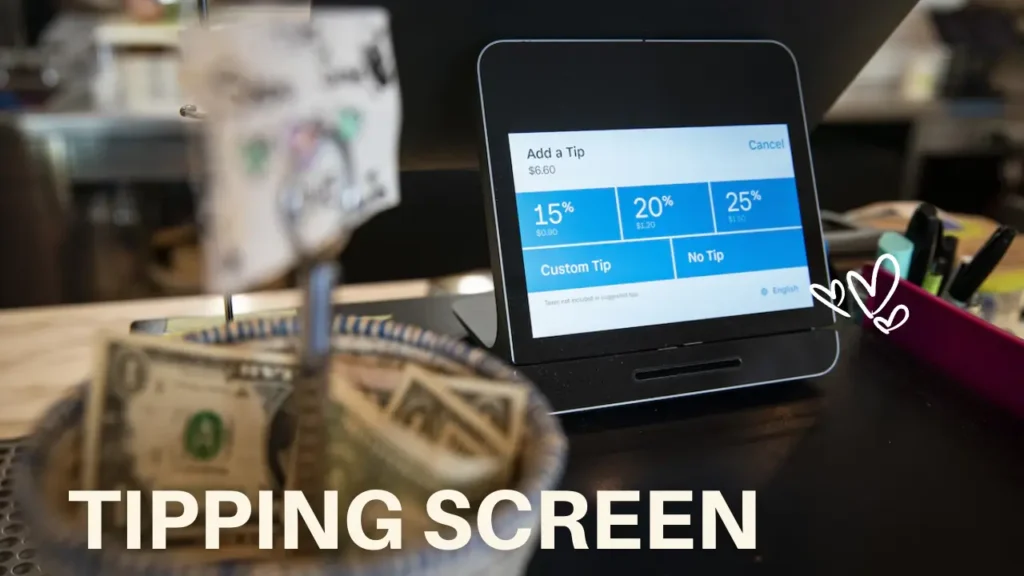
Tipping Screen is a digital feature seen in many places today, from coffee shops to ride-sharing apps. It allows customers to add a tip easily when paying for a service. This screen can be found on tablets, smartphones, or point-of-sale systems, providing a quick way for customers to show appreciation for good service.
This article will explain what a tipping screen is, how it works, its pros and cons, and more. Let’s learn all about tipping screens in simple words that anyone can understand.
What is a Tipping Screen?
A tipping screen is a part of a payment system that gives customers an option to leave a tip for a service. It usually appears after the total bill is shown. Customers can select from preset tip amounts or enter a custom tip.
These screens are often seen in restaurants, coffee shops, taxis, and delivery services. They make it easier to tip since all the customer has to do is tap on the screen. Tipping screens are becoming more common as digital payments grow, helping to replace the traditional way of tipping with cash.
How Does a Tipping Screen Work?
When a customer is ready to pay, the tipping screen appears on the payment device. The screen shows several options, like 10%, 15%, 20%, or a custom amount. The customer chooses their preferred tip amount, and it gets added to the total bill. Some screens also have an option to skip tipping. The ease of use is one reason why tipping screens are popular.
They help businesses collect tips faster, and they also guide customers who might not know how much to tip. It’s a simple tap-and-go process that saves time and effort.
Where Are Tipping Screens Used?
Tipping screens are found in many places where services are offered. They are common in restaurants, cafes, and food trucks. They are also used by delivery services, ride-sharing apps, salons, and even some retail stores.
With the rise of contactless payments, more businesses are adopting tipping screens. They provide a digital way to handle tips, making it convenient for both the business and the customer. By using tipping screens, businesses can increase their tip collection without needing to handle cash.
Why Do Businesses Use Tipping Screens?
Businesses use tipping screens for several reasons. First, they make tipping simple and fast. This helps businesses get more tips because the option is right there on the screen. Second, tipping screens can increase the total amount of tips received.
Customers may feel more inclined to tip when the screen prompts them, especially with preset amounts that suggest common tipping percentages. Third, tipping screens reduce the need for handling cash tips, making it safer and easier for businesses to manage money. They also provide a record of all tips, which can help with accounting.
Pros and Cons of Tipping Screens
Tipping screens have benefits, but there are also some drawbacks. The table below shows the pros and cons of using tipping screens:
| Pros | Cons |
|---|---|
| Easy to use | Pressure to tip |
| Increases tips collected | Not suitable for all services |
| Reduces cash handling | Can be seen as impersonal |
| Offers a clear tip record | May cause awkward situations |
How Tipping Screens Affect Customer Behavior
Tipping screens can influence how much customers tip. When preset options like 15% or 20% are shown, customers often pick one of these suggested amounts. This can lead to higher tips compared to leaving cash, where people might give smaller amounts like a dollar or some loose change.
Some people feel pressured by the screen to leave a higher tip, while others might feel uncomfortable if they don’t want to tip at all. The tipping screen’s design, including how the options are presented, can affect customer choices.
Benefits of Tipping Screens for Employees
For employees, tipping screens can lead to higher tips. Since the screens offer preset tipping amounts, employees often receive a more generous tip than they might from cash. This is especially true when customers use cards or contactless payments and don’t have cash on hand.
Tipping screens also provide a clear and fair way to distribute tips among employees. For example, tips collected digitally can be tracked and split evenly among workers, ensuring that everyone gets their fair share.
The Impact of Tipping Screens on Businesses
For businesses, tipping screens can improve service by motivating employees. When workers know they are more likely to get tips, they may provide better service. This can lead to happier customers and better reviews.
Tipping screens also help businesses keep track of tips more easily. Digital records make it simple to report tips for tax purposes, reducing the chance of errors. Overall, tipping screens can boost the income of both businesses and their staff.
Common Concerns About Tipping Screens
One common concern with tipping screens is that they can make customers feel pressured to tip. Some people might feel uncomfortable if they don’t want to leave a tip but see a screen asking them to.
Another concern is that not all services deserve a tip, and customers may feel confused about when tipping is appropriate. It’s also possible that the convenience of tipping screens could lead to tips being given in situations where they weren’t traditionally expected, like at a self-service kiosk.
The Future of Tipping Screens
Tipping screens are likely to become even more common in the future as digital payments continue to grow. They may start appearing in new places, like grocery stores or automated services.
As technology improves, tipping screens might include more options, like personalized tipping suggestions based on past behavior or loyalty programs. Businesses may also look for ways to make the tipping process feel more personal, even when using a screen. The goal will be to make tipping easy and comfortable for everyone involved.
Conclusion
Tipping screens have changed the way we tip for services. They offer a quick, easy, and modern way to show appreciation for good service. While there are pros and cons, the convenience and increased tipping amounts make them a popular choice for businesses and customers alike.
As we continue to use more digital payments, tipping screens will likely become a regular part of our daily lives. By understanding how they work and their impact, we can make more informed choices when we encounter a tipping screen.
This comprehensive guide has explored everything you need to know about tipping screens. Whether you are a business owner, employee, or customer, tipping screens have something to offer, making tipping simpler and more transparent.


